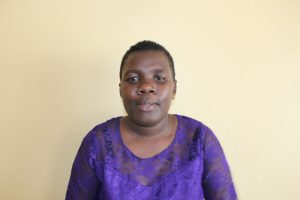The 140 community members in Emulomonye have faced the challenges of using dirty water from the local spring, their only water source, for a very long time.
Since they have no other water to consume, they drink the dirty water from the spring and get sick with waterborne illnesses (like typhoid). The repeated diseases cause them to have poor health, leaving them with limited energy and strength.
Another side effect is missed opportunities for development, work, and growing food. Because of this, they have insufficient income since they spend money on repeated medical treatments. As a result, many in the community suffer from hunger and poverty.
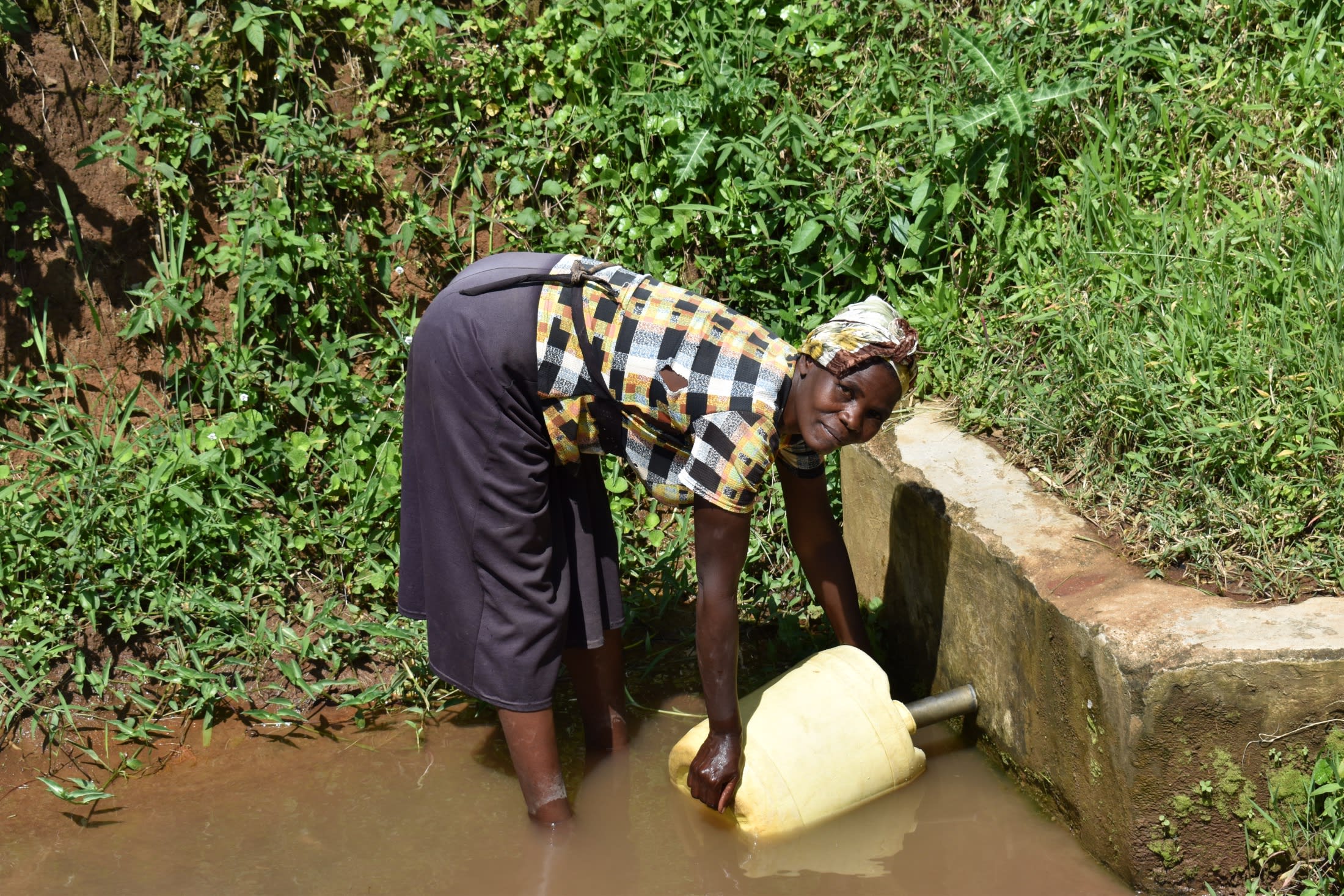
"Consumption of dirty water has rendered me underdeveloped, as most of the time [I] am [too] weak to engage in development activities due to being sick," said Grace Masambai (pictured above), a local farmer.
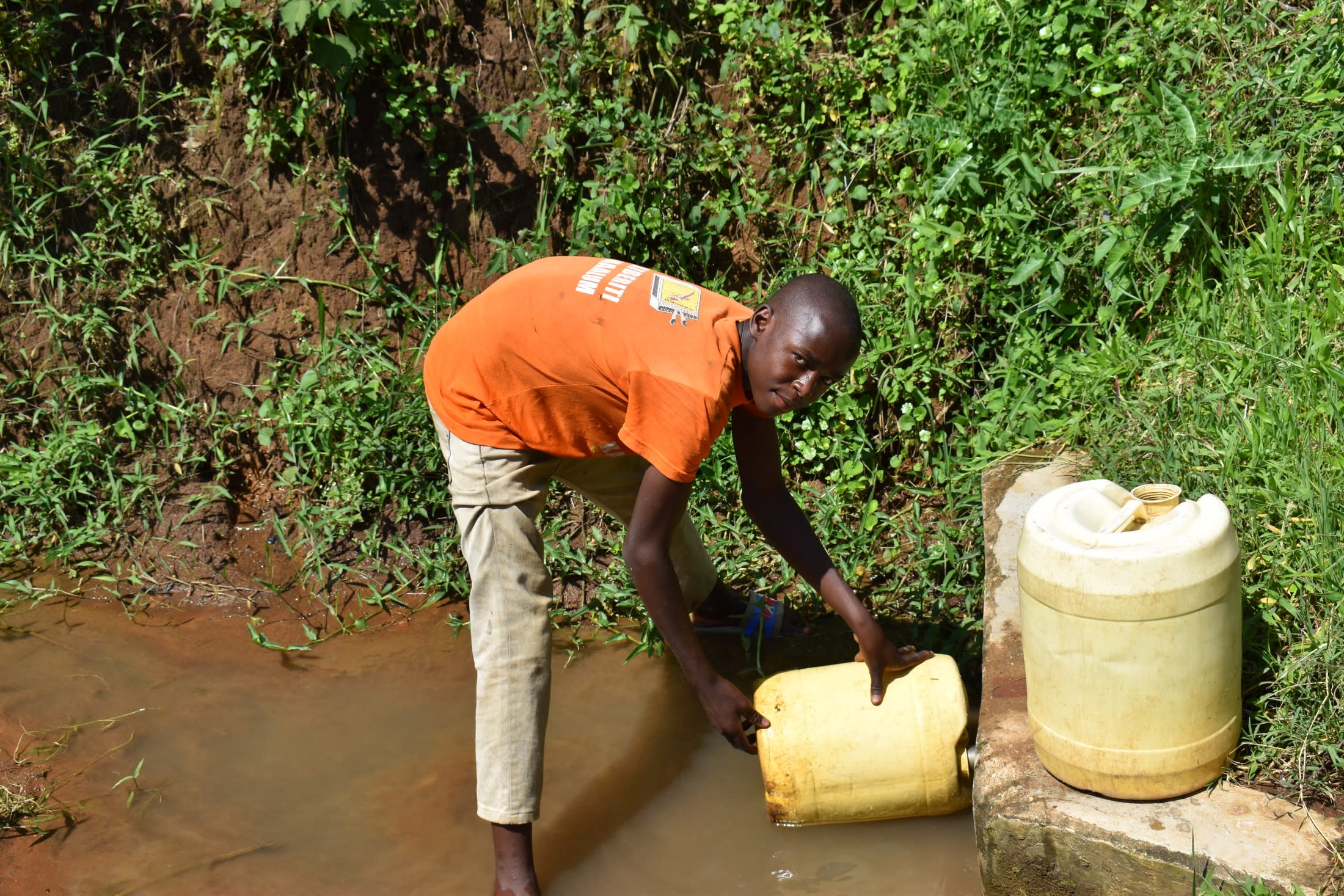
Children are also missing valuable time in school, limiting their futures. "Drawing water from [the] unprotected spring has resulted in the contraction of waterborne disease which most times forced [me] to stay at home and miss class lessons," said Sedrick (pictured above), age 15.
Community members walk to the spring, where they find long lines because of overcrowding, wasting time they could use to do other essential tasks. People often quarrel while trying to collect water first before it gets stirred up, which would mean waiting even longer for the water to settle before collecting again.
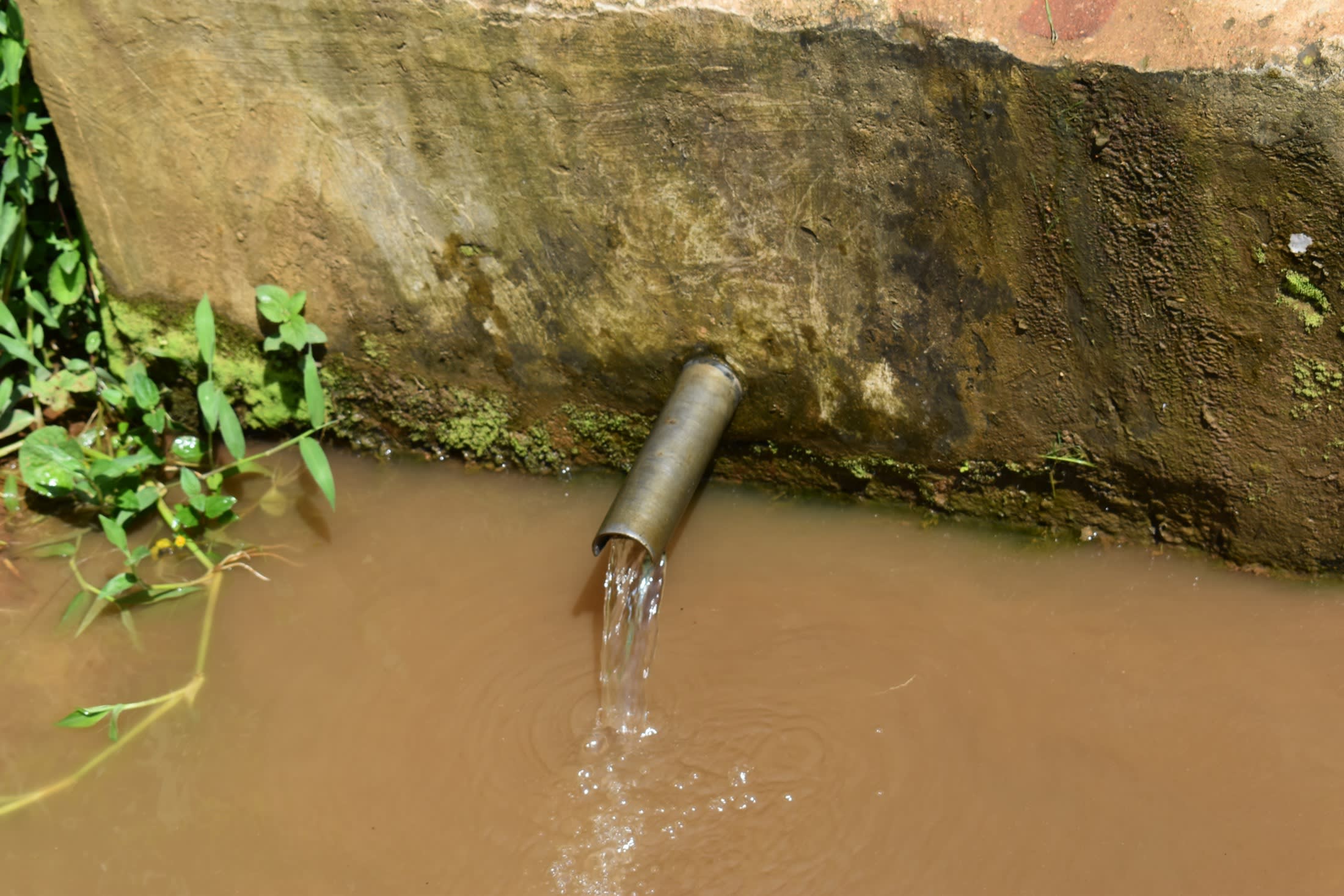
The improperly protected spring is in a low-lying area at the bottom of a steep slope surrounded by indigenous trees and farmland whose runoff contaminates the water. Community members must stand in the water to collect it, which makes it dirtier. The improperly set water pipe is too low, so people must lay their containers in the water to fill them, leading to even more contamination.
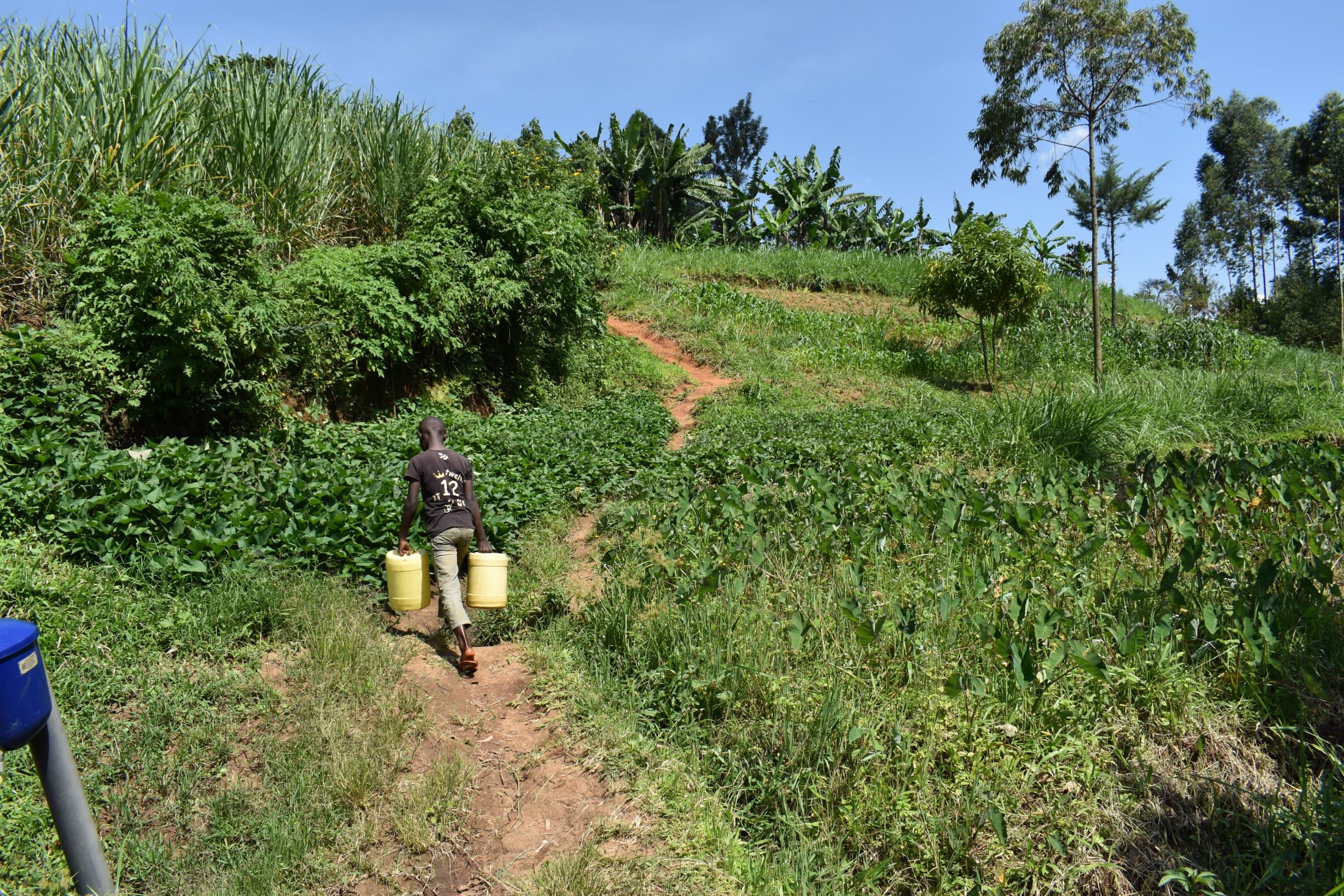
The spring needs to be correctly protected so the water will be clean and quicker to access. Those relying on this water source need to have time to get on with activities that support a healthier life.
What We Can Do:
Spring Protection
Protecting the spring will help provide access to cleaner and safer water and reduce the time people have to spend to fetch it. Construction will keep surface runoff and other contaminants out of the water. With the community's high involvement in the process, there should be a good sense of responsibility and ownership for the new clean water source.
Fetching water is a task predominantly carried out by women and young girls. Protecting the spring and offering training and support will, therefore, help empower the female members of the community by freeing up more of their time and energy to engage and invest in income-generating activities and their education.
Training on Health, Hygiene, COVID-19, and More
To hold trainings during the pandemic, we work closely with both community leaders and the local government to approve small groups to attend training. We ask community leaders to invite a select yet representative group of people to attend training who will then act as ambassadors to the rest of the community to share what they learn. We also communicate our expectations of physical distancing and wearing masks for all who choose to attend.
The training will focus on improved hygiene, health, and sanitation habits in this community. We will also have a dedicated session on COVID-19 symptoms, transmission routes, and prevention best practices.
With the community's input, we will identify key leverage points where they can alter their practices at the personal, household, and community levels to affect change. This training will help to ensure participants have the knowledge they need about healthy practices and their importance to make the most of their water point as soon as water is flowing.
Our team of facilitators will use a variety of methods to train community members. Some of these methods include participatory hygiene and sanitation transformation, asset-based community development, group discussions, handouts, and demonstrations at the spring.
One of the most important issues we plan to cover is the handling, storage, and treatment of water. Having a clean water source will be extremely helpful, but it is useless if water gets contaminated by the time it is consumed. We and the community strongly believe that all of these components will work together to improve living standards here, which will help to unlock the potential for these community members to live better, healthier lives.
We will then conduct a small series of follow-up trainings before transitioning to our regularly scheduled support visits throughout the year.
Training will result in the formation of a water user committee, elected by their peers, that will oversee the operations and maintenance of the spring. The committee will enforce proper behavior around the spring and delegate tasks that will help preserve the site, such as building a fence and digging proper drainage channels. The fence will keep out destructive animals and unwanted waste, and the drainage will keep the area's mosquito population at a minimum.

 Protected Spring
Protected Spring
 Rehabilitation Project
Rehabilitation Project










